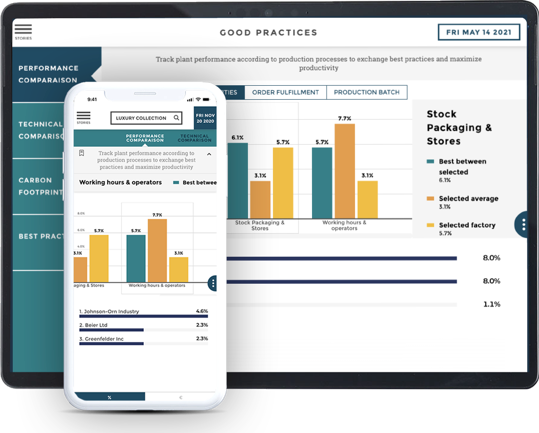By the end of 2022, more than half of all enterprise data will be hosted on the cloud. With more data being moved to the cloud, data analytics workflows are bound to be cloud-based too. In this article, we give you three reasons why this massive shift is happening now.
Wondering if you’re ready to make the jump? You can download our free ebook here.
.png?width=608&name=Copy%20of%20Untitled%20(11).png)
1- The cloud is going mainstream
The cloud is now a foundational tool for enterprises of all kinds and sizes. According to Flexera, 99% of organizations now use at least one cloud solution as part of their daily workflows. With 36% of organizations spending more than $1M per month on cloud tools, the sector has emerged as a major strategic resource for businesses of all sizes — including major enterprises — rather than solely of small businesses.
As the cloud goes mainstream, organizations are seeing it as more than merely a place to stash data for easy access. Increasingly, operations and workflows, including analytics, are also taking place in the cloud. In fact, within the next 12 months, enterprises will run 55% of workloads and host 52% of data in the cloud, while SMBs will run 69% of workloads and host 67% of their data in the cloud. That still leaves room for growth but it’s a clear sign of where businesses are heading.
What’s driving that transformation? One important factor is that IT people who previously balked at putting sensitive data in public clouds are now finding hybrid and cloud solutions that deliver robust security. In fact, two-thirds of C-level execs now see improved security as one of key benefits of shifting data and services to the cloud.
2- The cloud is more secure
What makes the cloud so secure? In part, it’s that the cloud is mature enough to have ironed out most vulnerabilities, while still being new enough to use up-to-date security protocols and standards that haven’t yet been adopted consistently by legacy and on-premises solutions.
Another important aspect is that public cloud providers know just how important security is to their customers, and invest accordingly, and the nature of the cloud makes it easy to instantly roll out updates and patches on an as-needed basis. With cloud systems also delivering more visibility through continuous reporting and logging of network activity, it’s far easier to spot attacks and rapidly take action to prevent them.
Effectively, the “security barrier” to cloud adoption has been removed. In fact, more than half of organizations now say they’re moving sensitive data such as consumer data and sales data to the cloud, and more than four-fifths of organizations are moving non-sensitive data to the cloud for analytics purposes.
With confidence in the cloud growing, your competitors are likely already making use of the cloud to store and process data. It’s important to join them if you don’t want to get left behind or find yourself developing a reputation for being behind the times.
3- Next generation BI tools are on the cloud
Cloud-based data analytics is a massive advance on first-gen business intelligence tools, which no longer have the power or flexibility to take businesses where they need to go. The rise of cloud tools delivers new capabilities for users across your organization, and it also gives you a chance to reassess your use of legacy software and rationalize and simplify your tech stack.
Every business knows that outdated on-premise tools stop you from moving into the new era. But every IT manager also knows that the longer you use legacy solutions, the harder it feels to move away from them. The more you jury-rig solutions and build out additional layers of software to keep your old-school systems running, the higher your sunk costs and the harder it becomes to modernize your infrastructure.
Cloud-based SaaS solutions let you avoid the sunk costs that hold your business back, and allow you to move faster and embrace next-gen tech to fuel innovation and create value for your customers. That’s especially important when it comes to BI, since first-generation BI tools are looking clunky and complicated when compared to current digital innovations.
Are you ready to make the jump?
Here at Toucan, we think bringing data analytics to the cloud is the right move for most enterprises. But we know how daunting structural changes of this scale can be. This is why we’ve written an ebook to help you determine if it’s the right time for you too. You can read it over here.





